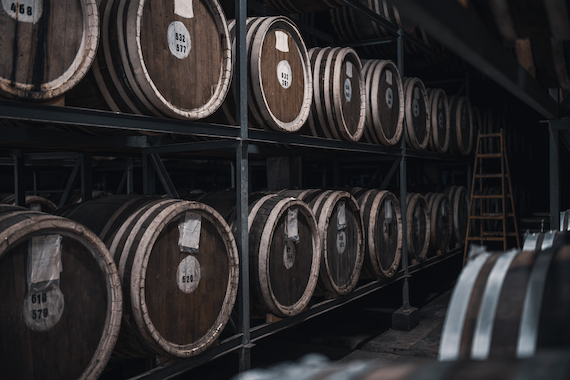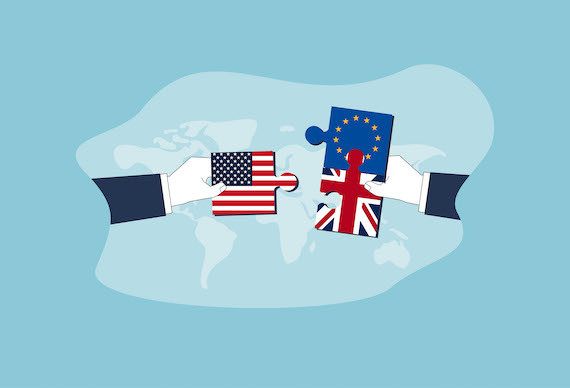It's safe to say that American whiskey has had its fair share of tough breaks in recent years. The trade dispute over steel and aluminium during the Trump administration saw the UK and EU place a 25% retaliatory tariff on American whiskey imports. This was followed by the global pandemic which, of course, devastated the on-trade and forced brands to completely flip their business models to survive some truly unprecedented times. Then, once face masks were removed and travel opened up, a surge in inflation bumped up the costs of resources such as barley, corn, glass and other integral materials used for making whiskey. Now, for the first time in years, a nugget of good news has been unearthed for an industry wading through a swamp of problems – but for how long can it relax before the sinking feeling returns?
In June this year the Biden administration came to a new agreement with the UK and EU to drop the harsh tariffs which were originally applied in 2018. A joyous occasion for both parties. “Now that the crippling tariffs have ended, we stand ready to help reset and strengthen the crucial trans-Atlantic trade relationship,” reads a joint statement released by the Distilled Spirits Council of the US and the Scotch Whisky Association on June 1. “This enduring partnership is critical to accelerating the recovery from the damaging impact of retaliatory tariffs, the Covid pandemic and the increasing pressures on global supply chains.”
What made these tariffs particularly bad for both sides is the significance of bilateral trade. According to a report by Beverage Daily, from 1997-2017 when there were no tariffs on whiskies between the US and UK, bilateral trade in the spirit increased 212%. Compare this success with the 35% decrease in bilateral trade between 2018-2021 and it’s easy to see the effects that the tariffs have had on both parties.
“The benefits of free trade are clear, and we champion it,” the joint statement continues. “We look forward to focusing on bringing our whiskies to consumers around the world and competing in the marketplace on a level playing field. We strongly support efforts by our governments to further enhance US-UK trade through sectoral agreements and the relaunch of negotiations for a bilateral US-UK free trade agreement.”
While it feels as though the industry has heaved a huge sigh of relief after four years of pain, it’s merely a shelter from the storm, which could be blown away again in the near future. The new deal involves a two-year period in which to negotiate a new agreement before the 25% tax returns in 2024. Many believe it’s likely a more permanent solution will be found, but until then the smaller producers have been left with a conundrum – do they go all in with exports to Europe and the UK and risk losing it all over again in two years, or sit tight and potentially lose market share to competitors?
EXPORT TARGETS
For Chris Swonger, president and chief executive of DISCUS, the nature of planning stocks years in advance makes judging export targets even more tricky. On the day the news broke of tariff suspensions he released a column with Entrepreneur magazine in which he spoke with Chicago-based Koval Distillery, which has been in the UK market for about a decade, about the effects the tariffs had after years of building overseas momentum.
“We noticed a significant drop in distributor and retail confidence in American brands due to the tariffs,” says Koval president Sonat Birnecker Hart. “In turn, the momentum that we had gained slowed. Now that the tariffs are lifted, we have seen greater interest and communication from our partners abroad.”
As the small to medium-size brands face some tough decisions, the bigger players sit in a more privileged position. Of course they’ll have lost more revenue than smaller brands during the tariff period, but their transition back to UK and EU trade should be smoother. Greg Mefford, international sales director at US-based Luxco, which owns Kentucky sites Lux Row Distillers and Limestone Branch Distillery, says the company had absorbed the tariffs for the past four years and therefore didn’t need to change its pricing. This means its American whiskies will return to being fully promoted in the UK as they were in 2018.
Thomas Mooney, co-founder and chief executive of Westward Whiskey – which received investment from Diageo’s accelerator company Distilled Ventures the same year the tariffs were introduced – also declared that his brand had absorbed the tariffs in order to protect 15 years of progress with the UK market.
“Historically, Europe has contributed more than 20% of our sales, and the UK has led the way,” said Mooney when the tariffs were still active. “It takes years, and considerable investment, to turn an export market into a meaningful part of our business. We have invested time and money in the UK for 15 years. For some time now, we have absorbed the cost of the 25% retaliatory tariff in order to compete, on top of the already higher costs that American exporters face.”

GEOGRAPHIC IDENTITY
While the vast majority in the American whiskey trade are full of positive energy right now, some remain unimpressed with Europe and the UK – the scar tissue left over from the four-year dispute. “A product’s strong geographic identity should not make it a target in trade disputes focused on airplanes or steel or aluminium,” says Matt Dogali, chief executive of the American Distilled Spirits Alliance, in a report by Beverage Industry Enthusiast. “When countries adhere to a zero-tariff policy, trade grows on both sides. This is especially true for whiskies, which have unique and strong brands produced around the world – and whose distilleries often sell whiskies from abroad alongside their own product.”
However, despite the undercurrents of frustration, the tariff suspensions were unanimously met with positivity and now the industry is urging the Biden administration to go further – to build on its victories with the UK and EU and target countries such as India, which has held a 150% tariff on American whiskey for decades, virtually preventing American whiskey from infiltrating the largest whisky market in the world.
According to Swonger, the future for American whiskey exports is in markets without tariffs, and in his report states that 86% of US spirits exports go to countries that have no tariffs in place. “When American spirits are sold abroad,” he says, “they do more than just spread good cheer and strengthen cultural exchange. They also create jobs up and down the supply chain, from local family farmers to bottling and shipping facilities.
“If America’s vibrant craft distillers can’t sell their products to the 95% of the world that lives outside of our country, their growth prospects will be limited.
“With the temporary tariff suspension, American distilleries scored a win. Now we hope for a more permanent solution. In the meantime, we’ll raise a toast to this exciting show of progress — and to an even brighter future ahead for American whiskey.”




